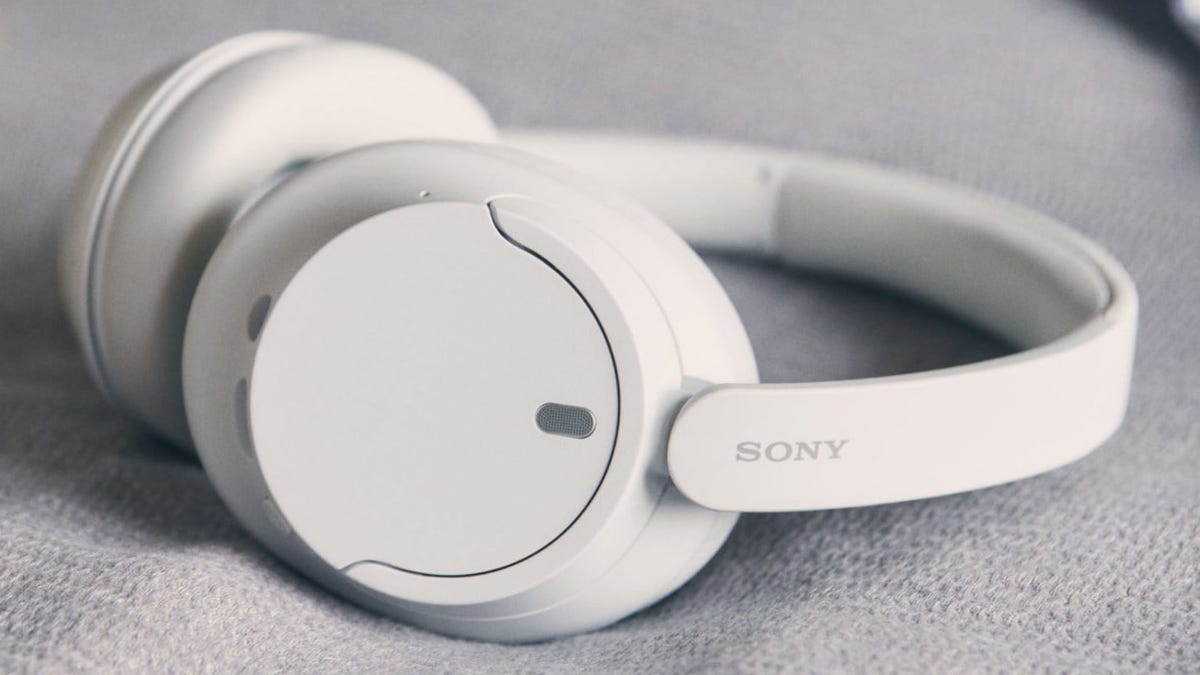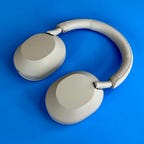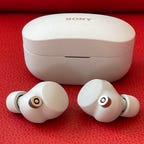
Over the years, Sony has established itself as a mainstay in the audio industry. The company has manufactured some of the best wireless headphones, earbuds and wired over-the-ear headphones. Sony’s headphones range from budget-friendly earbuds to high-end headphones with great sound quality for critical listeners. The company’s current flagship noise-canceling headphone, the WH-1000XM5, has top-notch noise muffling capabilities along with excellent sound quality and voice-calling performance.
I’ve tested all the Sony models on this list and I’ll update it with new Sony headphones and earbuds as they hit the market. The most recent additions are the new CH-720N noise-canceling headphones and the budget CH-520 on-ear headphones.
Read more: Best Wireless Earbuds for 2023
Show less
When you have a product that a lot of people love, change can be risky. Such is the case for Sony’s WH-1000XM5, the fifth generation of the 1000X series headphones, which were first released in 2016 as the MDR-1000X Wireless and have become increasingly popular as they’ve improved with each generation. Over the years Sony has made some tweaks to the design, but nothing as dramatic as what it’s done with the WH-1000XM5. Other than the higher $400 price tag ($50 more than the WH-1000XM4), most of those changes are good, and Sony’s made some dramatic improvements with voice-calling performance as well as even-better noise canceling and more refined sound.
Photo Gallery 1/1
David Carnoy/CNET
Show expert take Show less
Show less
No earbuds are perfect, of course, and not everybody will love the fit of the Sony WF-1000XM4 buds or be able to afford their high price (MSRP $278). But if you’re looking for great-sounding earbuds with excellent noise canceling, solid voice-calling capabilities and good battery life, these buds check all the boxes. And unlike the earlier WF-1000XM3, these are water-resistant with an IPX4 splash-proof rating.
Photo Gallery 1/1
The buds now come with foam ear tips to help you get a tighter seal.
David Carnoy/CNET
Show expert take Show less
Show less
Sony’s improved entry-level noise canceling headphones, the CH-720Ns, have a bit of a plastic, budget vibe, but they’re lightweight and comfortable. Part of me was expecting them to sound mediocre, but I was pleasantly surprised. No, they don’t sound as good as the WH-1000XM5s. But they sound more premium than they look (and feel), and their overall performance is a nice step up from their predecessor, the CH-710Ns. Are they worth $150? Maybe — or maybe not. But the good news is that, like the CH-710N and WH-XB910 before them, these should see some nice discounts in the not-so-distant future, which is what you may want to wait for.
Show expert take Show less
Show less
Sony released its new entry-level CH-720N noise-canceling headphones in 2023. They’re quite good, but if you can’t afford them (they list for $150), the company’s new budget on-ear CH-520 headphones are an intriguing option for only around $50.
They lack noise canceling and are pretty no-frills, but they feature good sound for their price, are lightweight and pretty comfortable for on-ear headphones, and also have excellent battery life (they’re rated for up to 50 hours at moderate volume levels). Additionally, they have multipoint Bluetooth pairing, so you can pair them with two devices simultaneously (such as a smartphone and computer) and switch audio. Voice-calling performance is decent, though not up to the level of what you get with the CH-720N.
Note that there’s no wired option — this is a wireless Bluetooth-only headphone. The CH-520 offers overall balanced sound with decent clarity. The bass has some punch to it but doesn’t pack a wallop, and you aren’t going to get quite as wide a soundstage as you get from Sony’s more expensive over-ear headphones. But these definitely sound better than Sony’s previous entry-level on-ear headphones, and they sound better than I thought they would. I tried the white color but they also come in blue and black.
Photo Gallery 1/1
David Carnoy/CNET
Show expert take Show less
Show less
Unlike the “open” LinkBuds, the LinkBuds S are traditional noise-isolating earbuds with tips you jam into your ears. They’re more compact and lighter than Sony’s flagship WF-1000M4 and also feature Sony’s V1 processor. While their sound and noise canceling don’t quite measure up to the WF-1000XM4s, they’re close and cost less. They’re the Sony buds for people who can deal with larger buds like WF-1000XM4 but want 80 to 85% of those buds’ features and performance for less money.
Photo Gallery 1/1
The case is slightly bigger than the AirPod Pro’s case.
David Carnoy/CNET
Show expert take Show less
Editors’ choice
Show less
Sony has released its new WH-1000XM5 but WH-1000XM4 remains on sale. While I prefer the WH-1000XM5 — it’s a little more comfortable, has improved noise canceling, more refined sound and significantly better voice-calling performance — the WH-1000XM4 is still a great headphone and some people may prefer its slightly more energetic sound and how it folds up into a smaller case than that of the WH-1000M5. It also costs less and we should see some nice discounts on it going forward.
Show expert take Show less
Show less
The LinkBuds are, in a sense, Sony’s answer to Apple’s standard AirPods. While they don’t sound as good as Sony’s flagship WF-1000XM4 noise-isolating earbuds, they offer a discreet, innovative design and a more secure fit than the AirPods, as well as good sound and very good voice-calling performance.
Like the third-gen AirPods, their open design allows you to hear the outside world — that’s what the ring is all about. That makes them a good choice for folks who want to hear what’s going around them for safety reasons or just don’t like having ear tips jammed in their ears. They also have a few distinguishing extra features, including Speak to Chat and Wide Area Tap. Instead of tapping on a bud, you can tap on your face, just in front of your ear, to control playback.
They’re IPX4 splash-proof and thanks to their fins — Sony calls them Arc Supporters — they lock in your ears securely and work well for running and other sporting activities.
Photo Gallery 1/1
David Carnoy/CNET
Show expert take Show less
Show less
While the C500’s design sensibility has more in common with the high-end WF-1000XM4 than their predecessor, the WF-XB700 Extra Bass, the C500 is not a noise-canceling model and is pretty basic as far as earbuds go, with no ear-detection sensors or transparency mode. But the buds are compact, lightweight, fit comfortably and sound good for an entry-level model. Read our Sony C500 first take.
Photo Gallery 1/1
The Sony C500 earbuds also come in white.
David Carnoy/CNET
Show expert take Show less
Show less
As for the WH-XB910N, this is the step-down model from the WH-1000XM4. It’s an Extra Bass model, so it does have a preponderance of bass. I liked the previous version, the XB900N, and it was a decent deal when it went on sale for around $150. This updated version looks the same but offers improved noise canceling and multipoint Bluetooth pairing, so you can pair it with your phone and computer simultaneously. It also supports Sony’s LDAC audio codec.
While improved, the noise canceling isn’t up to the level of the WH-1000XM4 or the WH-1000XM5. And the WH-XB910N doesn’t have some of those models’ extra features, such as Speak to Chat, wearing detection sensors and Sony’s Precise Voice Pickup technology. However, it does have a Quick Attention Mode that allows you to put your hand over the ear cup to go from noise canceling to an ambient-aware transparency mode. Also, this headphone now comes with a hard case like the WH-1000XM4. Battery life is rated at up to 30 hours at moderate volume levels — that’s the same as what you get from the WH-1000XM5.
Amazon had the blue version on sale for $138 during a recent one-day flash sale. These are a nice bargain at that price, so look to pick these up when they go on sale again if they pique your interest.
Photo Gallery 1/1
The improved Sony WH-XB910N has some changes to its headband design and comes with a hard carrying case.
David Carnoy/CNET
Show expert take Show less
Show less
Introduced way back in 1991, the Sony MDR-7506 has long been a favorite headphone of recording engineers and other sound professionals (yes, these are wired headphones). The origins of its design date even further back, since the MDR-7506 headphones are, in fact, a refresh of the Sony MDR-V6 that rolled out in 1985. Both models were designed for the pro sound market, but remain hugely popular with consumers.
While the two models have the same design and are very comfortable, they don’t sound identical. Both offer very well-balanced sound and excellent clarity for their modest prices — and both are great overall values. But the MDR-V6 headphones make a little more bass and sound more laid-back and mellow, while the 7506 headphones are leaner with a more accentuated treble range, which makes the sound a little crisper and livelier. Read our Sony MDR 7506 review.
Show expert take Show less
Show less
The Sony MDR-Z7M2 may not be the flagship audiophile headphone in Sony’s lineup (that would be MDR-Z1R), but it’s still a high-end model that lists for several hundred dollars. I reviewed the earlier version of the Z7 (the M2 at the end stands for Mark 2, or second generation) and it sounded great and was comfortable. To be clear, this is an audiophile headphone and sounds best with the right audio equipment, which may include a headphone amplifier or a high-resolution portable music player (notice the Sony Walkman player, which isn’t included, in the photo).
Photo Gallery 1/1
Sony
Show expert take Show less
Show less
If you’re looking for a cheap on-ear wired headphone, the ZX Series is as good a bet as any. It costs $13 — or $20 for the version with a microphone.
Photo Gallery 1/1
Sony
Show expert take Show less




